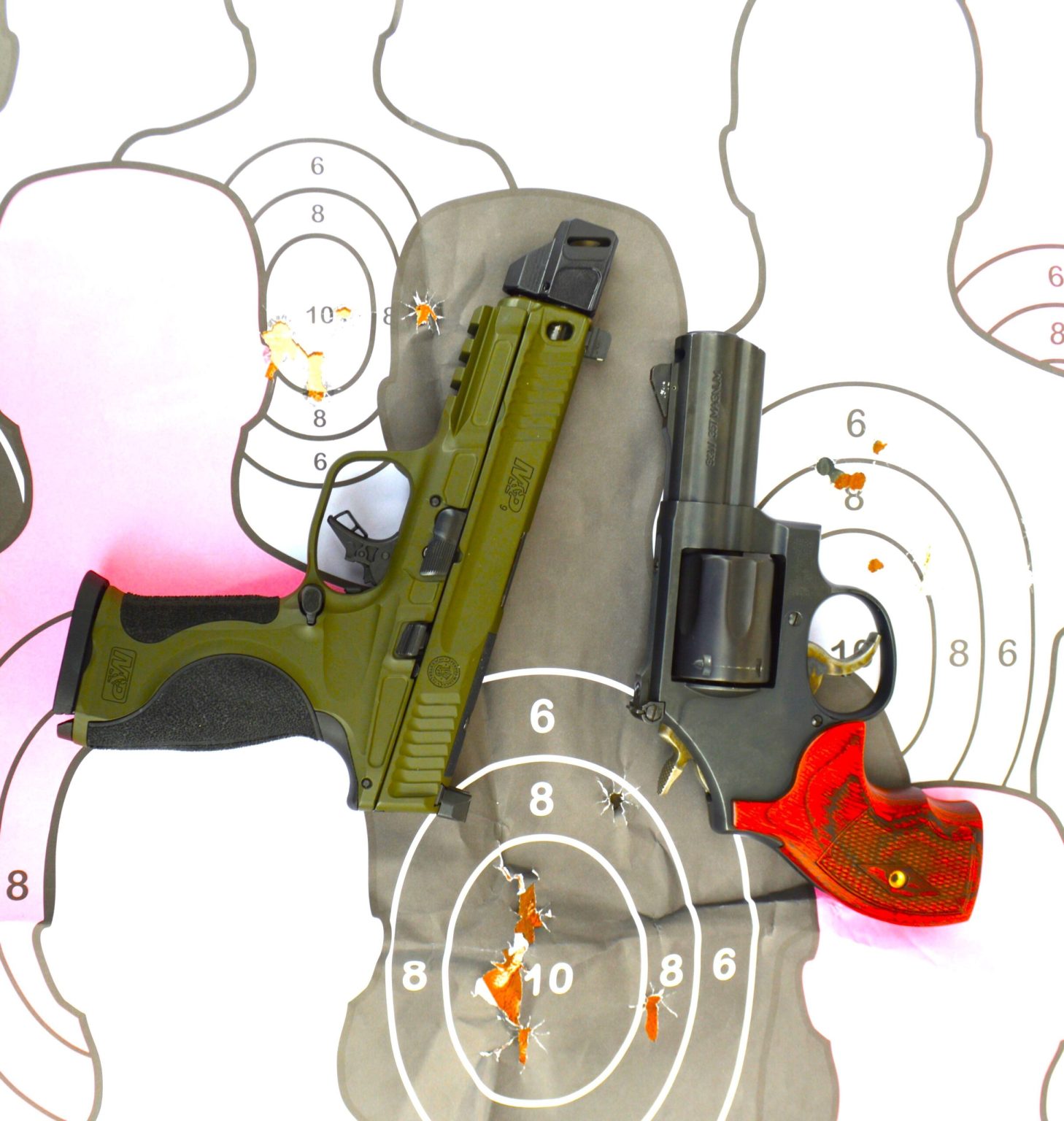It’s no secret that I’m a Smith & Wesson fan. I’ve enjoyed excellent results with dozens of their revolvers and semi-autos for more than fifty years. While I own several older models that have served me well, my carry choices today lean toward modern designs that outclass their predecessors.
For example, the Smith & Wesson Ultimate Carry 442 outperforms all of my older snub-nose .38s. The S&W 640 Pro Performance Center .357 Magnum is another standout, combining classic revolver reliability with modern refinements. Interestingly, a few of the handguns that have earned a permanent spot on my belt feature compensators—even when chambered in calibers that might not be expected.
So why a compensator? And how do they change the shooting experience? Let’s take a closer look.
What a Compensator Does
When gunpowder ignites, hot gases push the bullet down the barrel. A compensator redirects some of that gas to reduce muzzle rise, making recoil easier to control. While recoil energy doesn’t disappear, it’s redirected in a way that makes for a more comfortable and manageable shooting experience.
Benefits include:
- Reduced muzzle flip
- Faster, more accurate follow-up shots
- Improved practical accuracy under stress
However, compensators aren’t for every firearm. For example, a small-bore pistol or a revolver used primarily in close-quarters retention positions may not benefit from one. In some cases, redirected gas can even be a liability. Do your research before deciding if a compensator is right for your application.
The M&P9 M2.0 SPEC Series
The Smith & Wesson Military & Police series is among the most refined striker-fired pistols on the market. With the 2.0 upgrades, ergonomics are excellent, and the factory trigger ranks among the best in its class.
The SPEC Series adds a metal frame, bringing the pistol’s weight to about 30 ounces—slightly heavier than its polymer-frame counterpart. This modest increase in weight enhances control and improves natural point of aim.
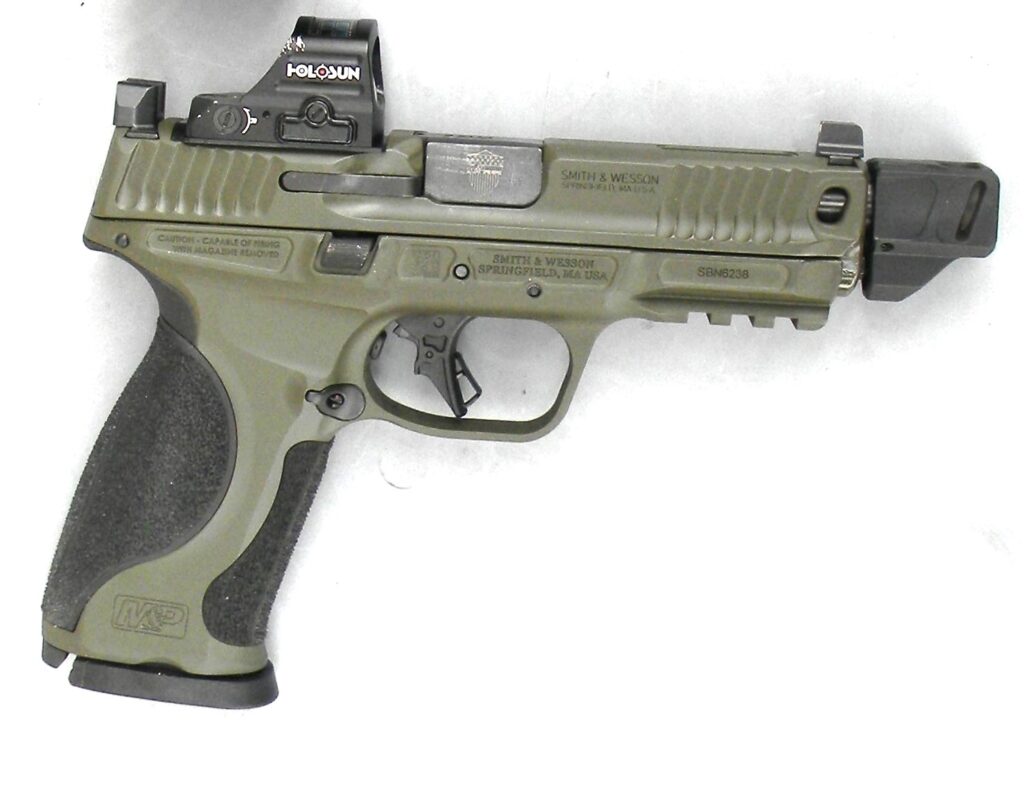
Specifications
- Caliber: 9mm
- Action: Striker-fired, semi-auto
- Overall Length: 8.5″
- Height: 5.5″
- Width: 1.3″
- Weight: 30 oz.
- Barrel Length: 4.8″
- Frame: Aluminum alloy with OD Green Cerakote
- Slide: Stainless steel with OD Green Cerakote
- Trigger: Performance Center enhanced sear, 4.0-lb break
- Capacity: 17+1 or 23+1 (includes 4 mags)
- Sights: Three-dot tritium, suppressor-height night sights
- Optics-Ready: CORE system
- Accessories: Faxon compensator, challenge coin, Karambit knife
Where To Buy
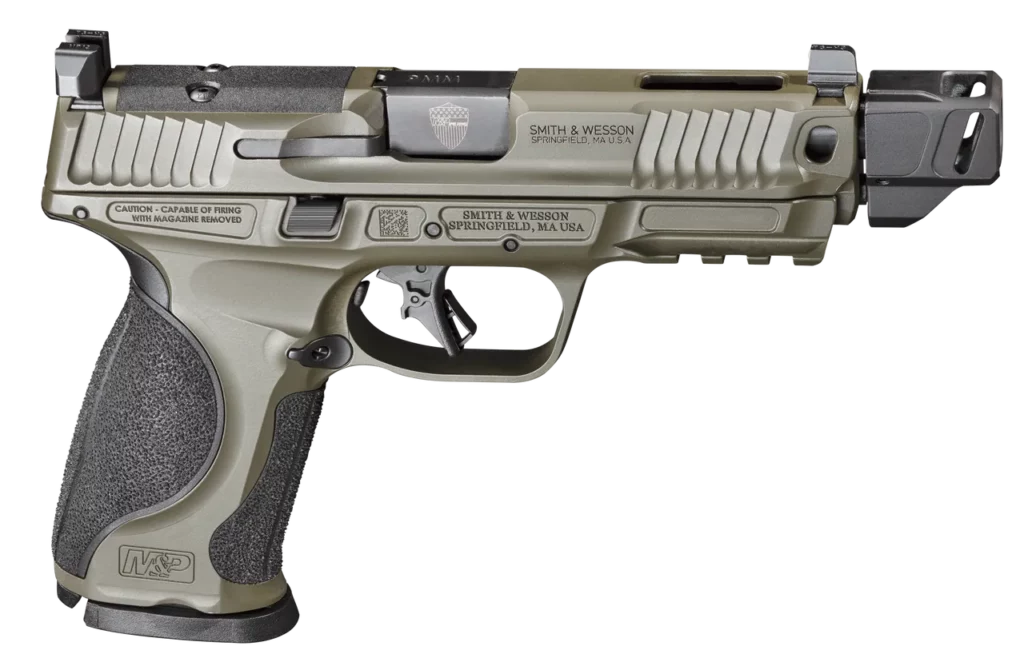
Performance with the Faxon Compensator
The addition of a Faxon compensator takes this pistol to another level. Recoil mitigation is impressive, and combined with the metal frame, the SPEC is one of the softest-shooting handguns in its weight class.
During testing:
- Standard-pressure loads showed a noticeable reduction in muzzle flip.
- With +P and +P+ loads, control was outstanding.
- Hornady 124-grain +P American Gunner (1200+ fps) felt surprisingly docile.
- A 115-grain Hornady XTP handload at 1380 fps was the lightest recoiling pistol I’ve fired with that load.
- Hornady’s 135-grain FlexLock, in both standard and +P, shot like a light target load.
In accuracy testing, the SPEC consistently grouped under two inches at 25 yards from a rest—exceptional for a striker-fired pistol. With a Holosun red dot added, speed and precision improved even further.
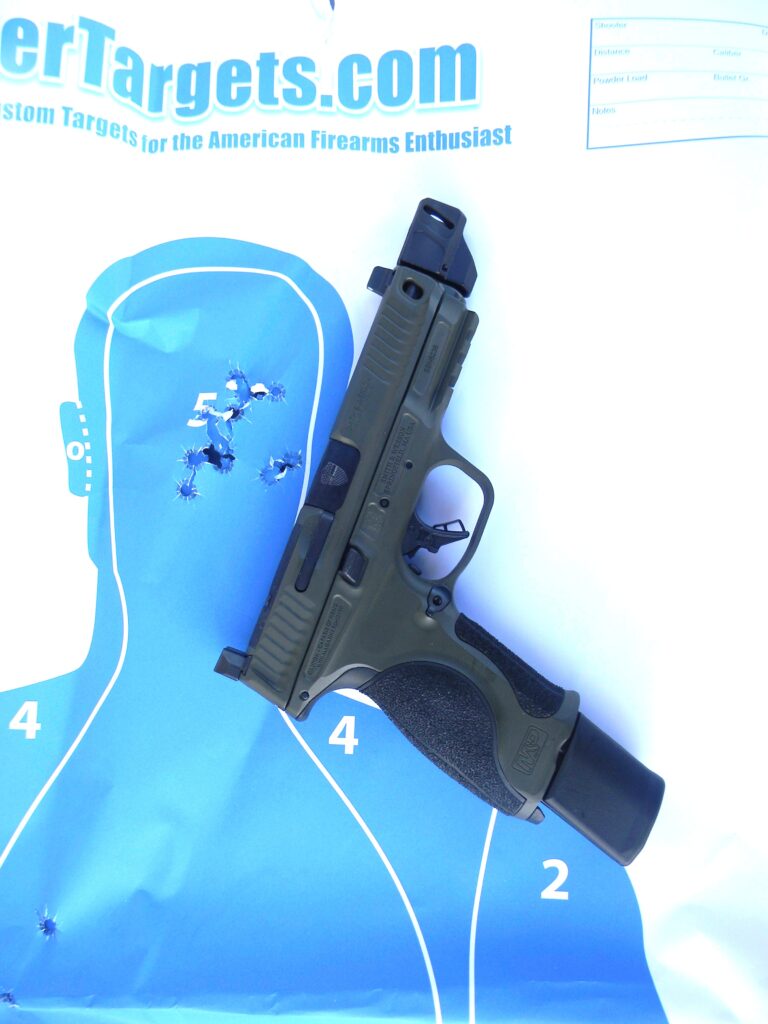
Extras: The SPEC ships with two 17-round and two 23-round magazines, a challenge coin, and a Karambit knife.
Smith & Wesson Performance Center Model 19 Carry Comp
For outdoor carry and hiking, I often rely on revolvers. The simplicity, double-action trigger, and reliability are hard to beat in the field. The Performance Center Model 19 Carry Comp in .357 Magnum is a standout, offering an internal compensator built directly into the barrel.
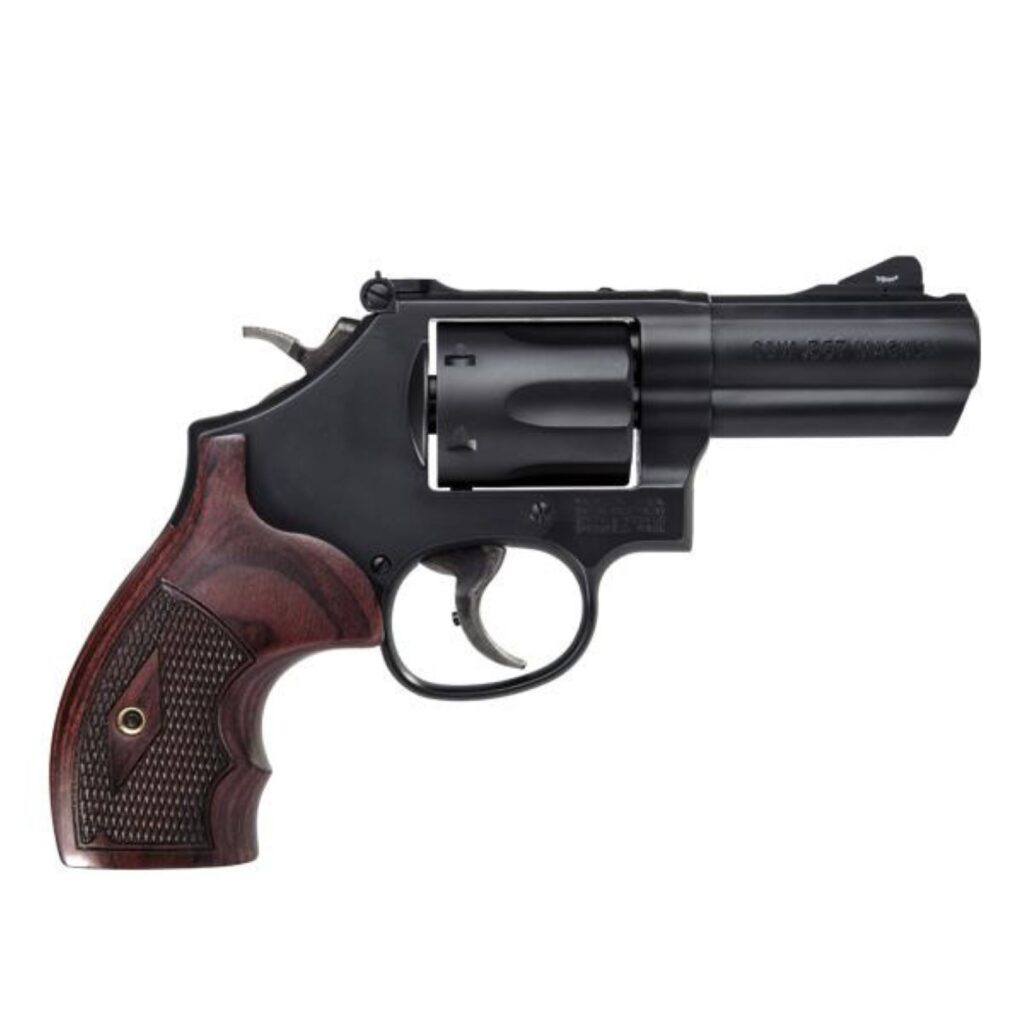
Specifications
- Caliber: .357 Magnum, .38 Special +P
- Capacity: 6 rounds
- Barrel Length: 2.5″
- Overall Length: 7.5″
- Weight: 33 oz.
- Frame: Carbon steel, matte blue finish
- Sights: Tritium night sight (front), adjustable black blade (rear)
- Grip: Custom wood and synthetic options
Where To Buy
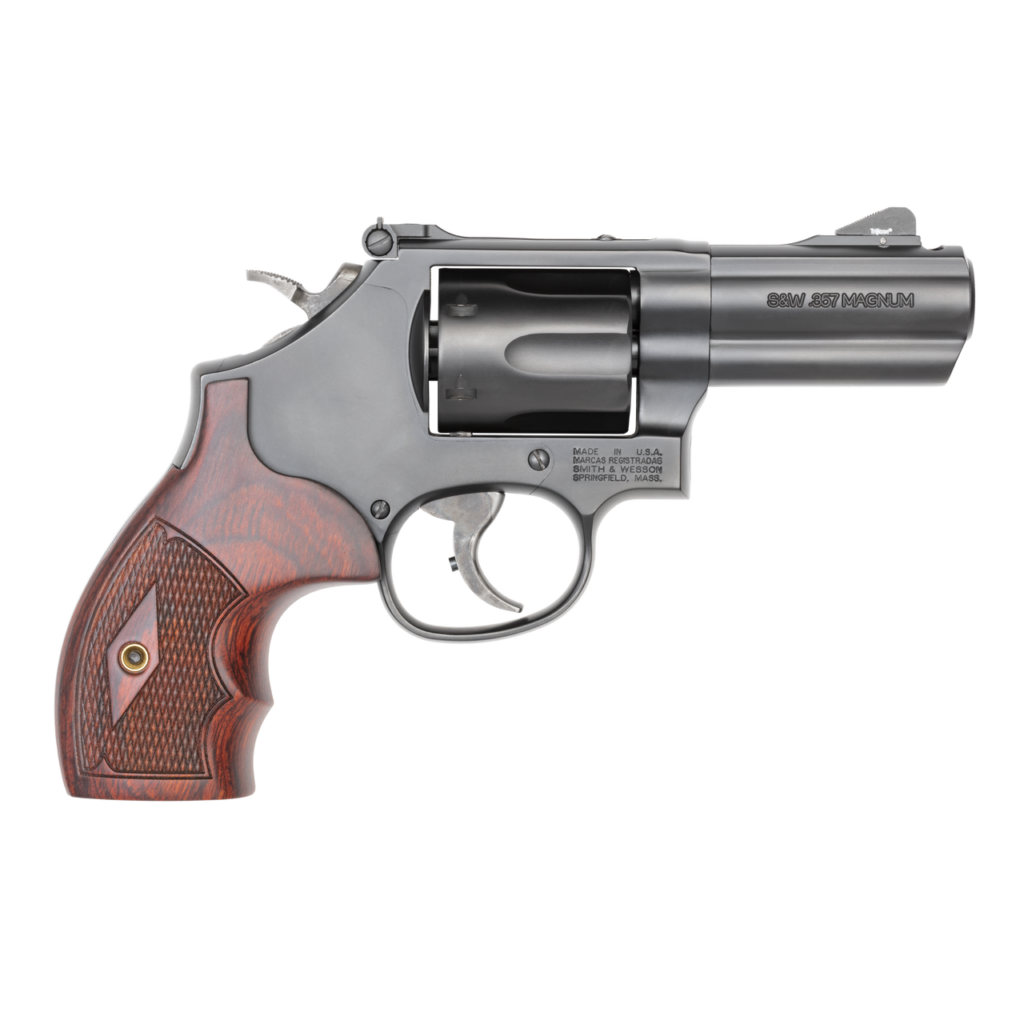
Handling and Recoil
This revolver strikes a balance—light enough for concealed carry yet heavy enough to tame Magnum recoil. I tested it with both .38 Special and .357 Magnum loads:
- .38 Special (125-grain XTP, 900 fps): Very controllable, fast follow-up shots, and minimal recoil.
- .357 Magnum (125-grain XTP, 1220 fps handload): Manageable with less muzzle blast than full-power factory loads.
- Hornady Critical Defense (125-grain, 1325 fps): Stout recoil but noticeably reduced muzzle rise compared to uncompensated revolvers.
With .38 Special loads, the revolver was exceptionally fast and easy to control. The long, smooth double-action pull helps fight flinch. Magnum loads were more punishing on the wooden grips, but Smith & Wesson includes rubber grips for shooters planning to run hotter ammo.
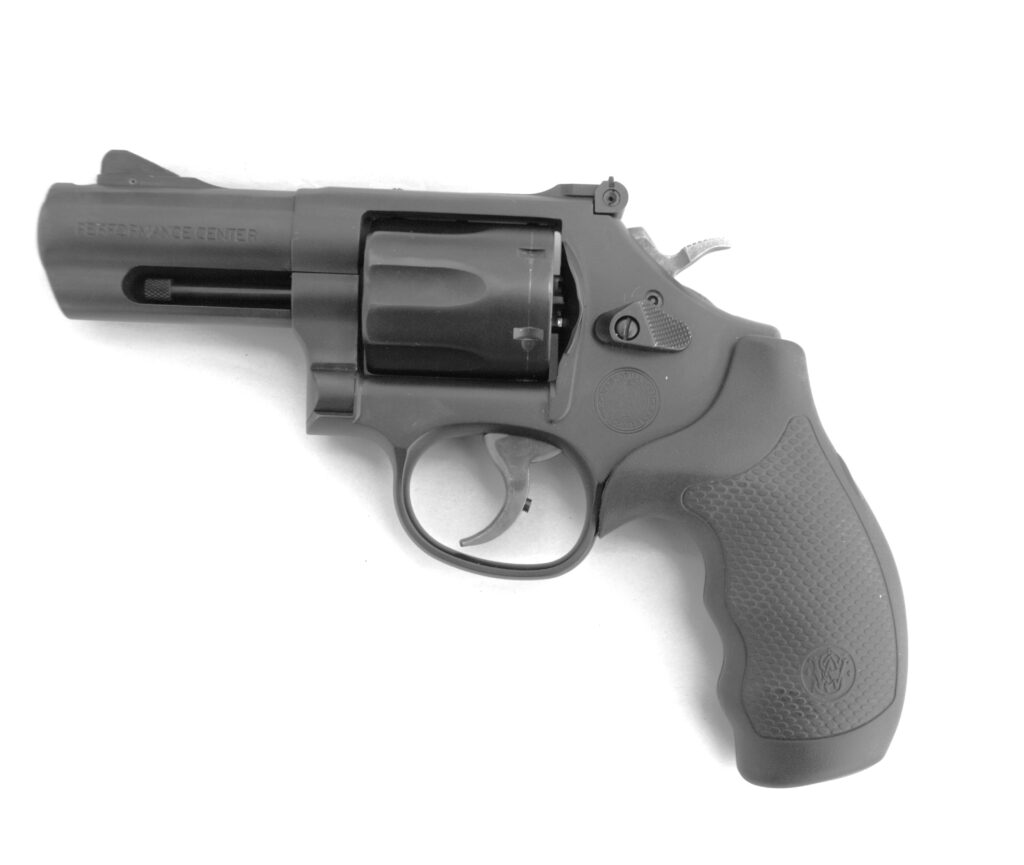
Final Thoughts
Smith & Wesson’s compensated handguns are not just gimmicks—they offer real performance advantages.
- The M&P9 SPEC Series delivers race-gun-like speed and control while remaining a practical defensive handgun.
- The Model 19 Carry Comp is an outstanding revolver for outdoor defense, striking a balance between Magnum power and controllability.
Whether you’re looking for faster splits on the range or a revolver that can tame hot loads on the trail, these Smith & Wesson compensated pistols prove their worth.
Read full article here


